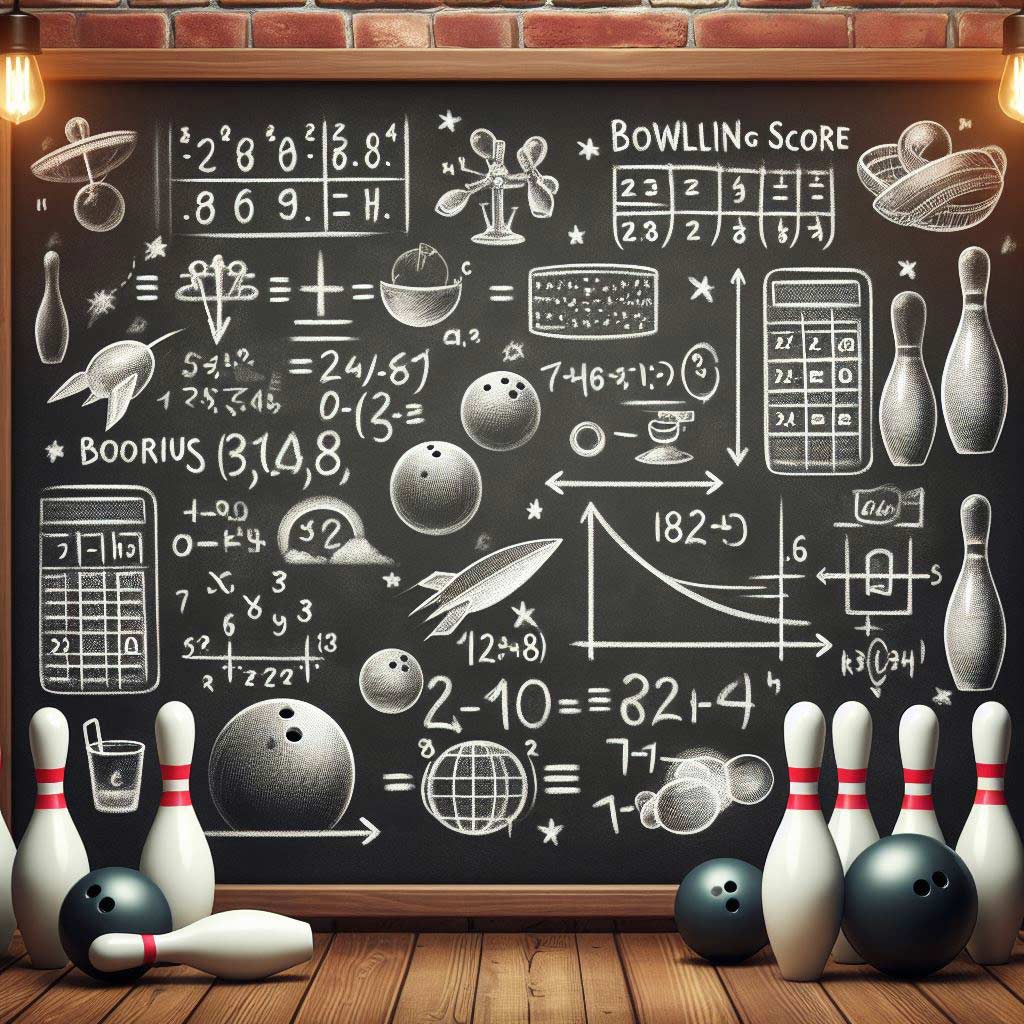Candlepin bowling has been enjoyed by players across New England and the Canadian Maritime provinces since the late 1800s. Unlike the tenpin bowling variant, candlepin games utilize smaller balls (2.9” maximum) without finger holes and taller, thinner pins that are reset after every ball throw.
While these unique game dynamics make for a more challenging yet forgiving game, many newcomers find candlepin bowling scoring to be complex and intimidating to learn. However, understanding the basics around frames, strikes, spares, and calculating string totals is key to keeping score and competing.
In this comprehensive guide, we’ll walk through step-by-step how to properly score a candlepin bowling game. You’ll learn the fundamentals, terminology, math formulas, scoring tips and tricks, and get pointers to hone your skills through practice games with friends. So grab a pencil and let’s hit the lanes!
Candlepin Bowling Scoring: The Basics
Each candlepin bowling game consists of 10 frames, allowing a bowler three balls per frame to knock down 10 pins. Unlike tenpin bowling which gives two shots per frame, the extra ball per frame makes it easier to throw strikes and spares.
When you knock down all 10 pins within a frame either on the first throw (strike) or using two throws (spare), you gain bonus pinfall points. Strikes provide bonus points for the next two balls thrown. Spares provide a bonus for the next ball thrown. This is all factored into your score.
After all 10 frames, players add up their string total pinfall points. Top scores for pros often exceed 300 points in a single string! Having a scoring sheet handy helps do the math. Consistent scoring through all frames is key to high scores and beating competitors.
How to Score a Regular Candlepin Bowling Frame
In each frame, regular pinfall scoring awards points based on the number of pins toppled:
- 1 pin = 1 point
- 2 pins = 2 points
- 3 pins = 3 points And so forth…
For example, if on your first ball, you knock down 3 pins, then on your second ball you knock down 4 more, you would tally that as 7 pins for that frame.
Use a candlepin bowling score sheet with separate rows per frame to mark down your pinfall points accordingly. This eliminates messy erasing, allows a review of each frame’s scores for post-analysis, and provides written proof of scoring disputes.
Here’s an example scoring sheet with frames 1 through 3 completed:
Frame 1 – 3 pins and 4 pins = 7 points
Frame 2 – Strike (bonus points applied after the next two balls are thrown)
Frame 3 – 6 pins and 2 pins = 8 points
How to Score Strikes and Spares in Candlepin Bowling
Strikes occur when you knock down all 10 pins on your first ball of any frame. Spares happen when you knock down the remaining pins within two ball throws in a frame.
These are key scoring plays, since strikes provide bonus pinfall points for your next two balls thrown, while spares give bonus points for the next ball thrown.
Here is how strike bonus scoring works:
If you throw a strike in frame 1, you would circle the “X” symbol for that frame and then wait until balls are thrown in frames 2 and 3. Add the pinfall from those next two balls together, then add that total to your strike bonus for frame 1.
For example: Frame 1 – Strike thrown, circle X (10 pins + bonus)
Frame 2 – 6 pins knocked down
Frame 3 – 3 pins knocked
Your Frame 1 strike bonus points would be: 10 pins (for the strike itself)
- 6 pins (next ball from frame 2)
- 3 pins (2nd next ball from frame 3)
= 19 total pinfall points
To score spares, the process is similar but simpler since you only get to count bonus points for your next ball thrown rather than the next entire frame.
Here’s an example: Frame 1 – 3 pins then 7 pins for a spare. Circle “/” symbol
Frame 2 – Strike thrown (10 pins)
Your frame 1 spare bonus points would be: 3 pins (1st ball)
- 7 pins (2nd ball for spare)
- 10 pins (next ball from frame 2 strike) = 20 total pinfall points
How to Calculate Your Candlepin Bowling String Total
As you complete all 10 frames with strikes, spares, and regular balls thrown, you simply add up all the pinfall points scored for that player’s string total. Having neatly notated scoring sheets will help significantly versus trying to mentally tally everything up.
Pay attention to the 10th frame, as more bonus balls may apply here for strikes or spares that further boost your total score.
If you throw a strike in the 10th, you get two extra bonus ball throws applied. For a 10th-frame spare, you receive one extra bonus ball added to your score.
For complete beginner games, scores typically range anywhere from 30 to 100 points per string. However, as seen on the professional candlepin tour, string totals above 160 are considered highly competitive. Elite bowlers can throw strings over 250 points with enough strikes and spares!
Key Candlepin Bowling Scoring Terms
As you learn to score candlepin games, here are some helpful definitions of key terms:
Frame: A frame consists of up to 3 balls thrown, to knock down 10 pins to earn points and possible bonuses. There are 10 frames per string.
- Strike (X): Knocking over all 10 pins on your first ball throw within a frame. Counts for 10 pins plus the next two ball bonus points.
- Spare (/): Knocking over the remaining pins within two balls thrown in a frame. Counts for 10 pins plus the next ball bonus points.
- Bonus Balls: The extra balls thrown after a strike or spare to calculate bonus points for the preceding strike or spare frame.
- Foul: Stepping or falling over the foul line during your ball throw. Counts as a dead ball earning no pinfall for that shot.
- String: The complete series of 10 frames bowled by one player, totaling up all pinfall points. Also called a “game”.
- Perfect Game: Score of 300 points achieved by throwing 12 consecutive strikes in a single string (frames 1-9 plus 3 strikes in frame 10). An extremely rare feat!
- Candlepin Bowling Score: Your total pinfall across all 10 frames. Top scores range above 160 for pros. Beginners often tally 30-100 points.
Tips and Tricks for Accurate Candlepin Scoring
Maintaining accurate score sheets across all frames not only enables fair games against friends but also builds foundations for improving strike and spare consistency. Here are some tips:
- Develop a Consistent Pre-Bowl Routine – From lane etiquette to visualizing your shots, pre-bowl routines set the stage for scoring success. As part of your routine checklist, grab a score sheet and fully prepare it before throwing any balls.
- Focus On Your Next Shot, Not Current Score – Tallying scores patiently after all shots for a frame are complete avoid mental mistakes. Don’t worry about your current score until reaching the next frame transition. Channel positive energy into perfecting your upcoming throw.
- Double Check Math with a Scoring App – Mobile apps like PlusBowling can automatically track and score candlepin games when configured properly with players’ names and handedness. This eliminates tedious handwritten math, allowing bowlers to check app figures against scoring sheet totals.
- Practice Scoring with Friends for Accuracy – Experience is the best teacher. While apps and score sheets do the tallying, learning how to mark strikes, spares, and pins knocked down builds overall scoring comprehension. Recruit a buddy to bowl mock games together and take turns tracking scores.
- Join a Virtual Candlepin League – Beyond solo practice, virtual bowling leagues through online platforms like RollTech.io enable competitive candlepin scoring experience from home. Face off against real opponents as you hone scoring skills and test overall bowling performance.
- Sign Up for a Local Candlepin Bowling League – Of course, nothing quite compares to real-world scoring experience on authentic lanes at your community candlepin center. Join fellow bowling enthusiasts in friendly local leagues. It’s a fun way to meet people while refining your scoring techniques and bowling talents.
Conclusion
Now that you’ve got the basics around candlepin bowling scoring methodology, the next step takes practice! Refer often to these scoring definitions and math examples. Over several strings, you’ll notice accuracy and consistency improvements.
Soon enough, predicting complex strike and spare scoring scenarios will feel like second nature. You’ll be knocking down the pins, tallying bonuses easily, and analyzing high scores to set new personal records.
Remember, even the pros started with beginner techniques. Stick with it through the learning curves. Stay focused on each frame as it happens rather than fixating on your score. Positive thinking yields scoring success.
With the right mindset and these scoring foundations mastered, you’ll be a candlepin record keeper and bowling champion in no time. Now grab a pencil and let’s see a high score! Leave any candlepin scoring questions below in the comments. Let’s chat bowling!
Frequently Asked Questions
How do you keep score in candlepin bowling?
In candlepin bowling, you score points based on how many pins you knock down each frame. Keep track on a scoresheet, marking an X for strikes, a / for spares, and writing numbers for pins knocked down. Tally any bonus balls into your score.
How do you win at candlepin bowling?
To win at candlepin bowling, aim to knock down the most pins across 10 frames. Throw strikes and spares to gain bonus points and build your pinfall total. Top scores exceed 160 points for pros. Focus, consistency, and scoring accuracy help earn the highest candles.
How do you score in bowling?
In bowling, you score points for each pin knocked down. Strikes give 10 pins plus the next two shots. Spares give 10 plus the next shot. Otherwise, add up pins per frame without bonuses. After 10 frames, combine your total pinfall score. Highest score wins.
How do spares work in candlepin bowling?
Candlepin bowling spares occur when a bowler knocks down all 10 pins using both of their shots in a frame. This earns bonus points for the next ball thrown. If you get a spare in frame 1, then strike in frame 2, you’d score 10+10+10.
How do you keep score in bowling for dummies?
Keeping bowling score for beginners is easy with scoresheets. Mark down pins hit each frame. Write “X” for strikes. Write “/” for spares. Add respective bonus balls. Tally total pins at the end. Apps help track automatically too. Focus on fun first!
Why is candlepin bowling harder?
Candlepin bowling is harder than tenpin because the balls have no finger holes, the tall narrow pins rarely bounce around, and three shots per frame make throwing strikes and spares rarer. Still, extra rolls allow higher potential scores!
Has anyone bowled a perfect candlepin game?
In over 140 years, no candlepin bowler has ever achieved a verifiable perfect score of 300 in a single string. Approaching 200 is rare. Top professionals still average only around 130 over many strings due to the game’s inherent challenges.
Has there ever been a perfect game in candlepin bowling?
No. There has never been a certified perfect 300-point candlepin bowling game. Since its 1880 invention, the closest authenticated score has been 245 points, rolled in 1984 by John Martino of Worcester, Massachusetts. Perfection remains elusive.
What is the trick to getting strikes in bowling?
For bowling strikes, align shots straight down the center arrow markers while maintaining a loose arm swing straight past release. Visualize hitting the pocket to scatter pins. Match ball weight and finger hole fit for comfort, grip, and swing consistency. Stay focused on exact placements for strikes.





